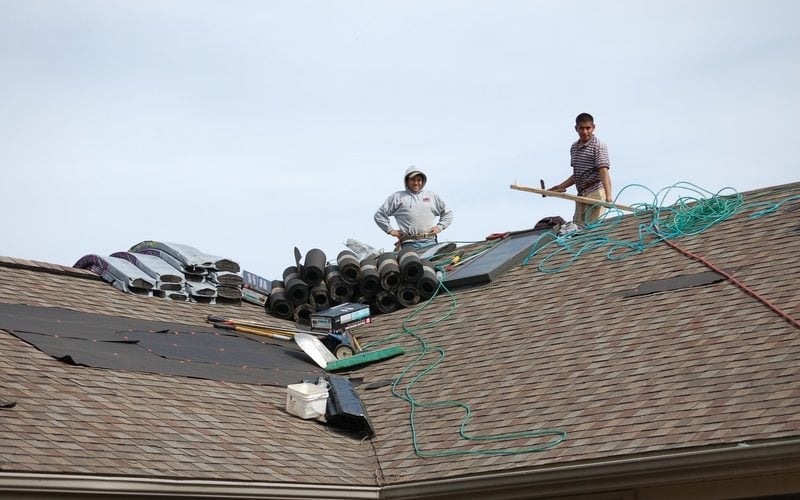What are the signs that your house needs a new roof (before it starts leaking? Should you have a complete tear-off or just add another layer of shingles? How do you decide which roofer to hire.
Do You Need A New Roof?
You might assume you don’t need to think about getting a new roof until the old one starts leaking, but if you wait that long it will be more expensive. Why? Because by the time you see the drip you probably have rotted wood to replace as well as shingles.
Here are some tips to help decide whether the time has come for this investment.
- How old is the existing roof? If installed properly and with good materials, an asphalt shingle roof should last 20-25 years, sometimes longer. If you’ve lived there for many years and don’t know when the roof was last replaced, it may be about time to have a roof replacement.
- Go outside and look at the roof. Are the shingle lines still straight or can you see sags or other irregularities? A sag would indicate that the sheathing underneath is rotting.
- After a rain when most of the roof is again dry, can you see discolored or darker spots that aren’t there when there’s been no rain for a week? If you do, that would suggest water is getting under the shingles and remaining wet after the surface has dried.
- Check if there are many asphalt granules when you clean your gutters.
- Do you see cracked, curled or misshapen shingles? As shingles age they begin to deteriorate.
- Go up in the attic, preferably during or immediately after a good rain, and look for evidence of leaks.
If you’re starting to see some of these warning signs, have a qualified roof inspector give you a professional assessment so you can plan your roof replacement.
Tear-Off vs. Overlay
When you start getting estimates for a new roof, some roofers will bid on the job based on a complete tear-off down to the wood decking while other roofers may suggest simply covering the existing roof with a new layer of shingles.
Shingle overlay may be cheaper, but is it really the best option? It is not recommended overlaying shingles for the following reasons:
- Many manufacturers warranties are void if shingles are installed over another layer of shingles. You can’t know where your roof really needs work unless you take off the old shingles. Often, there will be spots of the decking that have been damaged by water and need to be replaced. Covering over weak spots with a new layer just delays the problem.
- If you’ve had problems with ice dams on the roof, a tear-off is a good time to take preventive measures for the future. Roofers can easily add a special barrier sheet to prevent ice dam leaks — but this can only be done when you have gone down to the decking.
- A second layer of shingles is more difficult to install properly. Flashing around roof penetrations and sidewalls can be compromised. Shingles are heavy and when you add a new layer you have doubled the weight of the roofing materials. A heavy snow on top of that can increase the risk of a roof collapse.
Hiring A Roofer
Putting on a new roof may be the single biggest investment a homeowner makes. If all goes well, it’s an investment that will last 30 years. When hiring a roofer or other service provider (especially on an expensive job), have these in mind:
When hiring a roofer or other service provider (especially on an expensive job):
- Ask the contractor to show you proof of workers compensation and liability insurance.
- Ask for references of past customers in your neighborhood or nearby — and call them. Any contractor who acts offended when asked for references or licensing proof should be seen with suspicion.
- Be particularly wary of someone who knocks at your door offering a deal — especially if it is after a major storm that has done damage in your area.
Have questions or need a quote? Contact us today!

